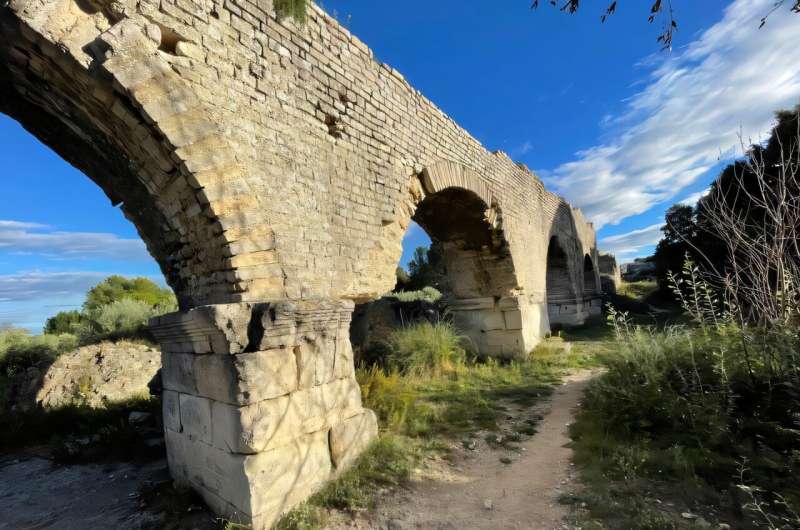Researchers from Johannes Gutenberg University Mainz, the University of Oxford, and the University of Innsbruck have unveiled the intricate history of the ancient aqueduct system of Arles in Provence. This groundbreaking study, published in Geoarchaeology on June 28, 2025, was made possible by analyzing limescale deposits found in the aqueducts, basins, and lead pipes, as well as in the building materials of the Baths of Constantine’s roof.
The study provides a comprehensive view of how the Roman aqueducts were not only maintained but also adapted over several centuries. Dr. Gül Sürmelihindi from the Institute of Geosciences at JGU, who led the study, emphasized,
“This study clearly shows how a Roman aqueduct worked over several centuries and was transformed at different times by the Romans, efficiently maintained and modified, and hence this is one of the clearest examples of a sustainable water management system from antiquity.”
Unraveling the Complex Water System of Arles
The research team focused on the complex water supply system of ancient Arles, which included several aqueducts, a basin, and interconnected water structures. Prof. Dr. Cees Passchier from Mainz University noted,
“Unlike previous studies, where we mostly dealt with a single aqueduct, here we investigated the complex water supply of ancient Arles, consisting of several aqueducts, a basin and connected water structures in the city.”
Initially, from 3 BCE, an aqueduct from the south flank of the Alpilles hills supplied water to Arles. Nearly a century later, an additional aqueduct was constructed from the northern side of the hills, joining the southern aqueduct in a shared basin. This basin functioned as a header basin upstream of an aqueduct arcade bridge, allowing sand and other suspended matter to settle.
The Role of Limescale in Historical Reconstruction
The discovery of aqueduct carbonates in collapsed ceiling fragments of the Baths of Constantine provided further insights. These carbonates, traced back to the northern aqueduct, revealed that when the baths were constructed in the early 4th century AD under Emperor Constantine, the aqueduct was restored, and the chipped-off carbonates were repurposed in the bath’s roof.
This finding answered longstanding questions about the water supply to the baths and the operational period of the Roman aqueduct, which likely continued until the 5th century AD, when the region faced invasions from the Franks and Burgundians.
Decoding the Mystery of Roman Lead Pipes
The study also addressed the role of large lead pipes discovered in the 19th century, which ran across the Rhône River bed. Using isotopic analysis of the carbonates, researchers confirmed that an inverted siphon from the Arles aqueduct supplied water to the Trinquetaille quarter across the river.
Dr. Passchier highlighted the significance of the carbonate archives, stating,
“Without the aqueduct carbonate archives, it would be impossible to reconstruct these relationships. But because the deposits are heavily contaminated with clay, they cannot be dated using standard dating technologies.”
Instead, the team analyzed stable oxygen and carbon isotopes, cross-referencing isotopic profiles to determine the historical timing of modifications to the water system.
Implications and Future Research
This study not only sheds light on the sophisticated engineering and adaptability of Roman water management systems but also opens avenues for future research into ancient infrastructures. The methodologies developed could be applied to other archaeological sites, offering a new lens through which to understand historical urban planning and resource management.
The findings underscore the ingenuity of Roman engineering and its relevance to modern challenges in sustainable water management. As researchers continue to explore the remnants of ancient civilizations, the lessons from Arles’ aqueducts may guide contemporary efforts to design resilient infrastructure in the face of climate change and urbanization.
